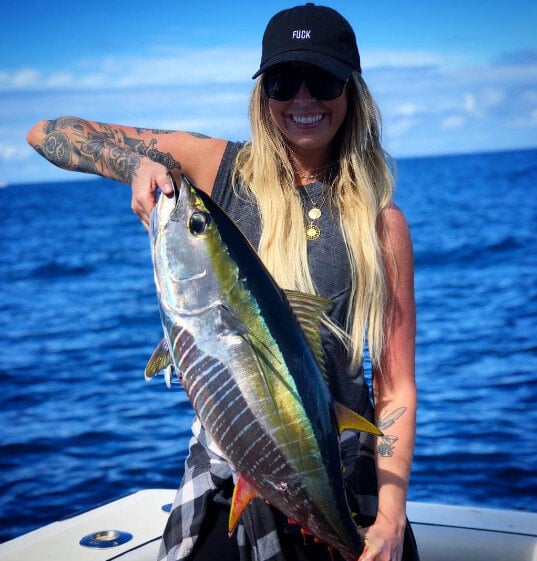Yellowfin Tuna
Yellow Fin Tuna Fishing in San Diego: A Thrilling Experience
Experience the thrill of yellow fin tuna fishing in San Diego with San Diego Fishing Co! Our expert captains and crew will take you to the best yellow fin tuna fishing spots in Southern California, where you'll have the chance to catch these prized game fish. Yellowfin tuna are one of the most prolific pelagic sportfish are known for their incredible fighting ability and are a favorite among anglers.
About Yellow Fin Tuna
Yellow fin tuna are a highly sought-after species in San Diego and Mexican waters. They are known for their bright yellow fins and can weigh anywhere from 40 to 150 pounds, with some specimens reaching much larger sizes. These fish are warm-blooded, which makes them agile and fast, and are considered one of the strongest fighters in the lineup.
Fishing for Yellow Fin Tuna
Yellow fin tuna are often found schooling with other types of tuna and can be targeted using topwater techniques. They are also known to swim alongside dolphins, porpoises, and whales, making for an unforgettable fishing experience. Our expert captains and crew will take you to the best spots to catch these fish and provide you with the best chance of landing a prized yellow fin tuna.
Book Your Yellow Fin Tuna Fishing Charter Today!
Don't miss out on the opportunity to catch a yellow fin tuna in San Diego. Book your charter with San Diego Fishing Co today and experience the thrill of yellow fin tuna fishing for yourself.
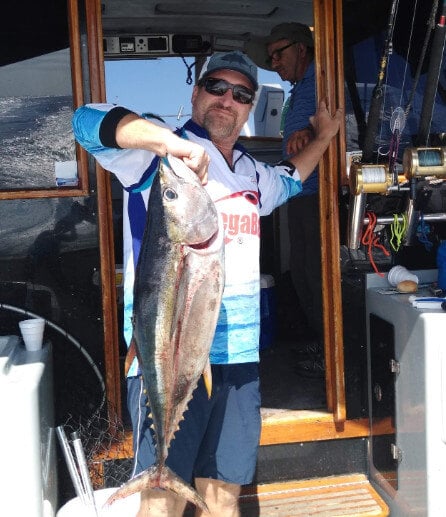
Kite Fishing
Kite fishing is a highly effective technique for targeting trophy tuna and other pelagic predators. By deploying live or dead baits using kites, anglers can present their offerings above the surface, where they're more likely to be seen by feeding fish. This method is particularly useful when drifting over underwater structure or schools of feeding fish, as it allows the bait to move naturally and attract the attention of predators.
.jpeg)
Kite fishing is often used in conjunction with frozen flying fish, which are a favorite snack of bluefin tuna. By suspending the flying fish above the surface, anglers can create the illusion of a injured baitfish, which is irresistible to hungry tuna. This technique requires patience and skill, but the rewards can be substantial, with trophy catches of 200 pounds or more not uncommon.
Throwing Iron
Throwing iron is a proactive technique that involves casting metal jigs off the bow of the boat, often at a distance from the target area. This method is designed to attract the first fish and start the frenzy, which can then be followed up with other techniques like live bait or kite fishing.
Throwing iron is a high-energy technique that requires a strong arm and good casting skills. However, when done correctly, it can be an extremely effective way to get the attention of feeding fish and start a bite.
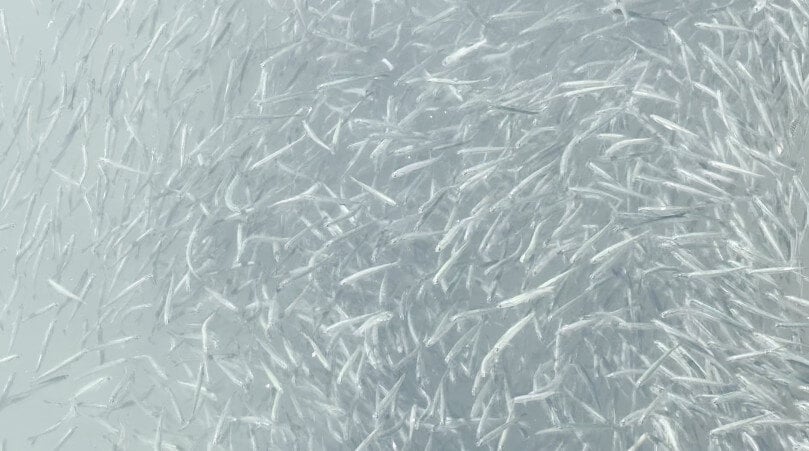
Live Bait
Live bait drift fishing is a natural and effective way to catch large species like yellowtail and dorado. By deploying live baitfish, such as sardines or anchovies, anglers can create a realistic presentation that mimics the natural movement and behavior of these baitfish.
This technique involves drifting over known feeding areas, allowing the live bait to move naturally and trigger bites from predators. Live bait drift fishing is a patient approach that requires a good understanding of the local fishing grounds and the behavior of the target species.
Slow Trolling
Slow trolling is a patient and deliberate approach to targeting migratory species like bluefin tuna. By trolling lures or live bait at a slow pace, anglers can create a presentation that mimics the natural movement and behavior of these species.
Slow trolling requires a good understanding of the local fishing grounds and the behavior of the target species. It also requires patience and persistence, as the payoff can be slow in coming. However, when done correctly, slow trolling can be an extremely effective way to catch trophy-sized fish.
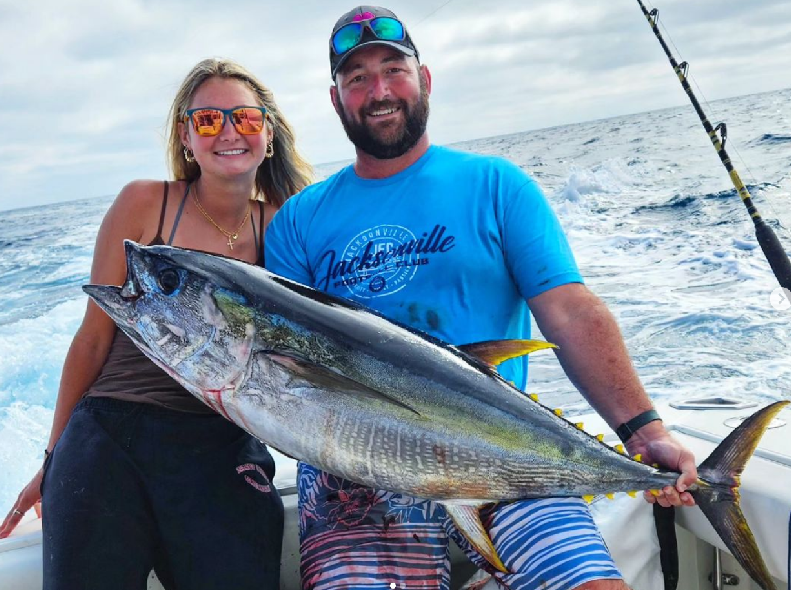
Yo-Yo Ironing
Yo-yo ironing, also known as the flat fall, is a high-energy technique that involves using metal jigs called "iron" to cover water quickly while maintaining contact with bottom structure. This method is ideal for targeting aggressive fish like yellowtail and tuna, which are drawn to the rapid movement and flash of the iron. By rapidly dropping the iron to the bottom and then retrieving it, anglers can create a reaction strike from these predators. The flat fall is a versatile technique that can be used in a variety of situations, from targeting specific species to exploring new fishing grounds. By adjusting the weight and size of the iron, anglers can tailor their presentation to the specific fishing conditions and target species.
Yellowfin Tuna Information
- Season: June to November, with peak season in July and August
- Migration Pattern: Yellowfin tuna migrate from the warmer waters of Mexico to the cooler waters of San Diego during the summer months. They tend to congregate around the edges of the continental shelf, where the water is deeper and more nutrient-rich.
- Fishing Spots: Popular fishing spots for yellowfin tuna in San Diego include the outer banks, the Coronado Islands, and the area around the 9-mile bank.
- Fishing Techniques: Yellowfin tuna can be caught using a variety of techniques, including trolling, casting, and chunking. They are often targeted using lures such as jigs, spoons, and plugs.
- Size: Yellowfin tuna typically range in size from 10 to 50 pounds, with some larger fish reaching up to 100 pounds.
Fishing Regulations
- Bag Limit: The bag limit for yellowfin tuna in San Diego is 10 fish per day, with a minimum size limit of 20 pounds.
- Season: The yellowfin tuna fishing season in San Diego is open year-round, but there may be closures or restrictions in place due to conservation efforts or other factors.
- Gear Restrictions: There are no specific gear restrictions for yellowfin tuna fishing in San Diego, but anglers are encouraged to use catch-and-release fishing practices and to handle the fish gently to minimize injury.
Tips and Techniques
- Trolling: Trolling is a popular technique for catching yellowfin tuna in San Diego. Anglers can use lures such as jigs, spoons, and plugs to target the fish.
- Casting: Casting is another effective technique for catching yellowfin tuna in San Diego. Anglers can use lures such as jigs, spoons, and plugs to target the fish.
- Chunking: Chunking is a technique that involves using bait such as squid, anchovies, or sardines to attract yellowfin tuna. Anglers can use this technique to target the fish in areas where they are known to congregate.
- Kite Fishing: Kite fishing is a technique that involves using a kite to suspend a lure or bait above the water. This technique can be effective for catching yellowfin tuna in San Diego.
Migration Patterns
- Summer: During the summer months, yellowfin tuna migrate from the warmer waters of Mexico to the cooler waters of San Diego. They tend to congregate around the edges of the continental shelf, where the water is deeper and more nutrient-rich.
- Fall: During the fall months, yellowfin tuna begin to migrate back to the warmer waters of Mexico. They tend to congregate around the same areas as during the summer months, but may be more scattered.
- Winter: During the winter months, yellowfin tuna are less common in San Diego waters. They may still be found in some areas, but are generally less abundant than during the summer and fall months.
- Spring: During the spring months, yellowfin tuna begin to migrate back to San Diego waters. They tend to congregate around the same areas as during the summer months, and can be targeted using a variety of techniques.
Spots We Fish
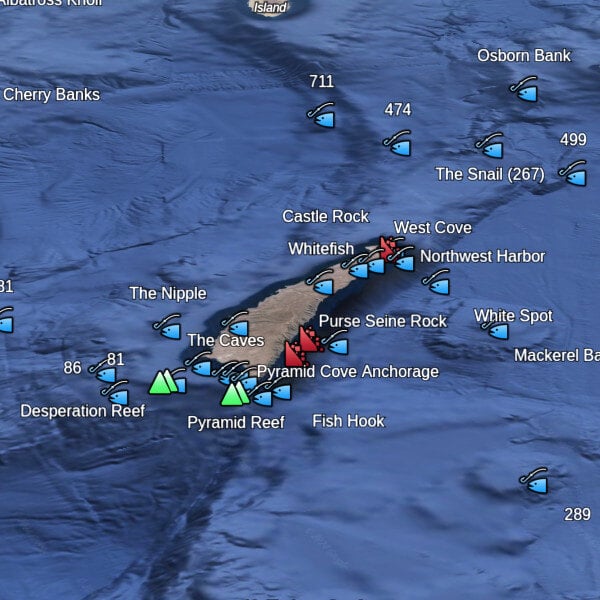
San Clemente Island.
If you want massive blue fin, this is one of, if not the MOST productive spot on the entire map. This place is almost always holding tuna. Most of our overnight and multiday trips start here. The backside is known for pre-dawn jig bites, and this is a lunching spot for the other nearby banks. During summer months is best.
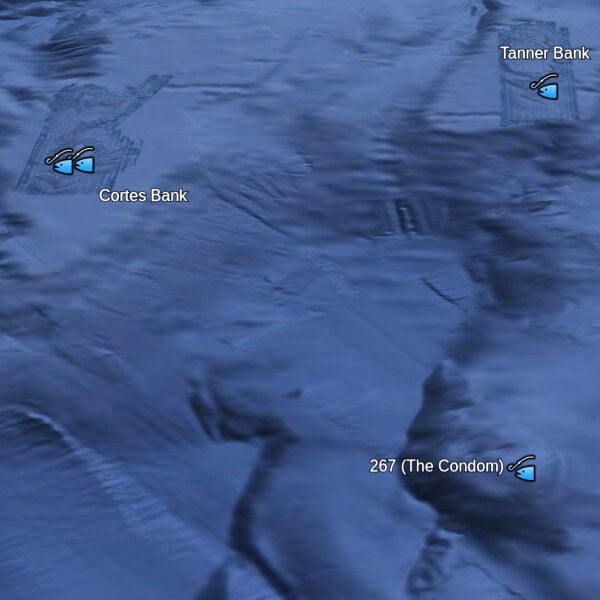
Tanner & Cortez Banks.
These two spots represent the far end of a 1.5 day overnight trip, and is a common destination for all long range trips we offer. These banks come very close to the surface, even causing surfable waves at times.
The underwater structure attracts all types of large pelagic predators, which is exactly what we are looking for.
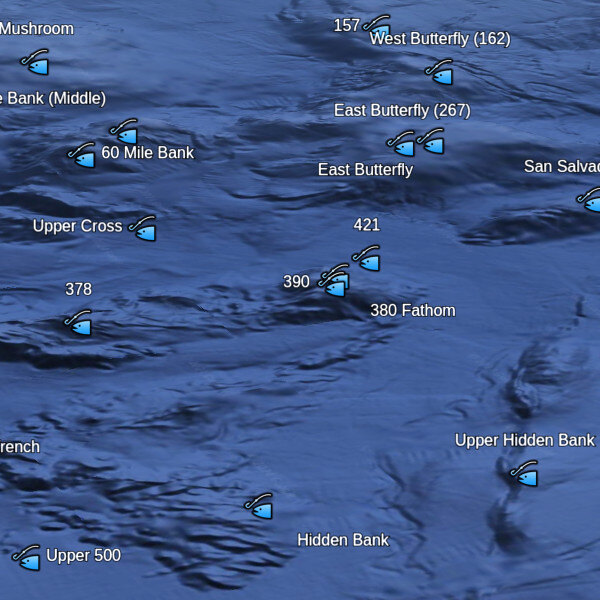
Mexican Outer Banks.
Mexican international waters means no passport for these multiday trips. Enjoy the outright crazy fishing on any of these deep banks that are south and south west of San Clemente island. Home of giant blue fin, yellow fin, and Dorado, you will likely find that you are one of only few boats fishing the unpressured spot.

